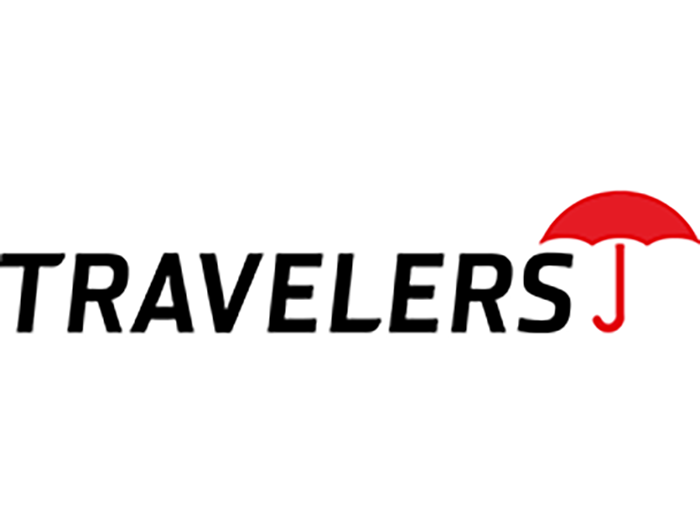PMA Companies’ Monica Manske on Prioritizing Safety from Recruitment to Retention

In a recent interview, Monica Manske, senior strategic consultant — risk control with PMA Companies, shared her insights on workplace safety for new employees with Michelle Kerr, workers’ compensation editor at Risk & Insurance. They discussed various strategies, from fostering a safety culture pre-hire to tailoring safety training to different learning styles.
What follows is a transcript of that conversation, edited for length and clarity
Risk & Insurance: What does it mean to immerse employees into the safety culture before they’re hired, and how is this achieved in practice?
Monica Manske: There are many ways to foster communication about an organization’s safety culture before a candidate is hired. I believe in using multiple messaging methods to capture all learning types. The first clue may be the online job description, where adhering to safety policy is listed as a key responsibility.
Employers should go beyond that by offering candidates the ability to see safety in action during the interview process. This can include providing a tour, talking to employees who are doing the job, and exploring the candidate’s prior experience with safety. Opening up a dialogue about safety during the interview is valuable.
Even things like social media can showcase a company’s commitment to employee safety. One prior Teddy Award winner highlighted their dedication to safety right on their website. Ultimately, there are many ways to communicate about safety and engage candidates in the discussion before they’ve even been hired. It can even be a differentiator for a candidate when deciding where to work.
R&I: What key elements do you recommend for a company’s onboarding process to ensure that new employees understand and prioritize safety in accordance with the company’s expectations?
MM: The first and foremost element that comes to mind for an orientation is providing the new employee with information on how to report a safety concern or incident. This can occur in a general orientation where employees receive critical procedural information and the employee handbook.
It’s also a great time to introduce a safety contact, safety policy, and the employee’s roles and responsibilities. From there, the employee transitions into an on-the-job or role-specific orientation. This is an opportunity to communicate organizational and role-specific expectations, make the employee comfortable in their new environment, and teach them how to do their job safely while promoting safe work practices.
R&I: How do work hardening and peer shadowing contribute to injury prevention among new employees, and what are some practical tips for implementing these techniques?
MM: Work hardening is like going to the gym after a period of inactivity. If you don’t build yourself up gradually, you’ll likely end up sore for days. Work hardening eases new employees into their roles, preventing injuries by allowing them to adapt to the physical demands of the job over time.
Employers can implement work hardening through job rotation, alternating between active workdays and learning days. Stretch and flex programs, where all employees participate, can also help minimize the impact of the job on the body, especially when embraced by frontline employees from the beginning.
Peer shadowing is similar to work hardening in that it physically prepares employees for the job, but it also allows them to ask questions, learn standard operating procedures and gain insights from experienced peers. When selecting a peer for shadowing, it’s important to choose someone who is not only a great technical expert but is also approachable and possesses good communication skills.
Employers sometimes miss the mark by selecting a peer who is technically proficient but not the best trainer. By carefully considering both technical expertise and training abilities, companies can ensure that new employees receive the guidance and support they need to perform their jobs safely and effectively.
R&I: Statistics show that 40% of lost time claims occur in the first year of employment. How do you put new workers’ vulnerability to workplace injuries into perspective?
MM: At PMA, we are fortunate to have significant capabilities in data and loss analysis, which the average employer typically lacks. We utilize this information to develop service plans that help reduce their total cost of risk.
In addition to PMA’s data, my go-to source is the Bureau of Labor Statistics (BLS). BLS standardizes data capture and offers employers the ability to see what’s happening across multiple industries or their own focus injuries through various lenses. BLS provides data on case and demographic information, including tenure, making it an invaluable resource for comparing information across carriers and industries.
Another important aspect to consider is the frequency and severity impact of injuries on tenure. By examining workers’ compensation data, we can determine not only the frequency of incidents but also the financial impact related to tenure. BLS data also provides insights into lost workdays when comparing tenure.
R&I: What are some of the most effective ways that companies can communicate safety protocols and expectations to their employees, particularly considering the differences in learning styles and experiences among different age groups?
MM: When developing safety learning programs, it’s crucial to consider multiple methods of learning to capture a greater audience, ensuring that the content is learner-focused rather than teacher-focused. A great starting point for any employer is to understand the demographics of their employee population and generations, while concurrently identifying the groups incurring the greatest number of new employee injuries. This information will help guide the type of learning and teaching that is most effective for the team.
For example, older workers, who may be more conservative, bring valuable experience that can be leveraged in training sessions. They may require a more organized and straightforward approach to learning. On the other hand, younger populations may be more intuitive and creative but lack the same level of life experience.
As an employer, it’s essential to focus on these generational differences when analyzing your demographic and the causes of new employee injuries. By tailoring your training methods to the specific needs and learning styles of your employees, you can effectively communicate safety protocols and expectations, ultimately reducing the risk of workplace accidents and injuries.
R&I: What are some of the key areas where employers tend to struggle when it comes to keeping their new employees safe or developing a program for it?
MM: One of the main challenges employers face is identifying where to focus their efforts. Often, they try to address hiring, onboarding and the first year all at once, which can lead to missing important pieces along the way.
The best practice is to approach it in manageable segments. Start by looking at hiring practices, then move on to general orientation, followed by role-specific training and, finally, first-year retention strategies.
Trying to tackle everything simultaneously increases the risk of overlooking crucial elements. It’s essential to break it down and address each aspect systematically to ensure a comprehensive and effective approach to employee safety and wellbeing.
R&I: What are the essential components of best practices for an employer looking to comprehensively improve their approach to first-year employees?
MM: The first step is to analyze the data to understand what story it tells about the organization, combined with their existing knowledge, to conduct a risk assessment on tenure and new employee injuries.
The next step is to plan and identify what makes sense for their organization. This may involve examining hiring and onboarding practices, orientation and focusing on deeper aspects beyond simply providing more training. It’s about fostering a culture of safety.
The key is to go back to the fundamentals of how employees are hired and onboarded, rather than relying on a catchall solution like additional training.
It’s crucial for employers to have sound practices in place to protect workers of all ages and experience levels, especially given the high turnover rates in some industries. This is particularly important now, as we’re seeing older workers possibly returning to the workforce due to various incentives, which may put them at greater risk.
Employers must be prepared to accommodate employees of any age and experience level entering the workforce. Implementing comprehensive safety training, providing appropriate personal protective equipment, and fostering a culture of safety are essential steps. Regular safety audits and assessments can help identify and address potential hazards.
Furthermore, employers should stay informed about any changes to worker protection laws and regulations in their states. By proactively adapting their safety practices to comply with these changes, they can ensure a safe working environment for all employees, regardless of age or experience.
R&I: How can organizations define and measure the success of their new-worker safety efforts?
MM: First, it’s crucial to define how you will determine success. Identify a goal that you can measure against for continuous improvement.
From my perspective, I would advise organizations to clearly define what success looks like for them. Risk control is a great partner in this process, and it’s something that we at PMA would guide our clients through. Remember, you’re not alone in this — all industries are facing similar challenges, and there are resources available to help you improve together. &










